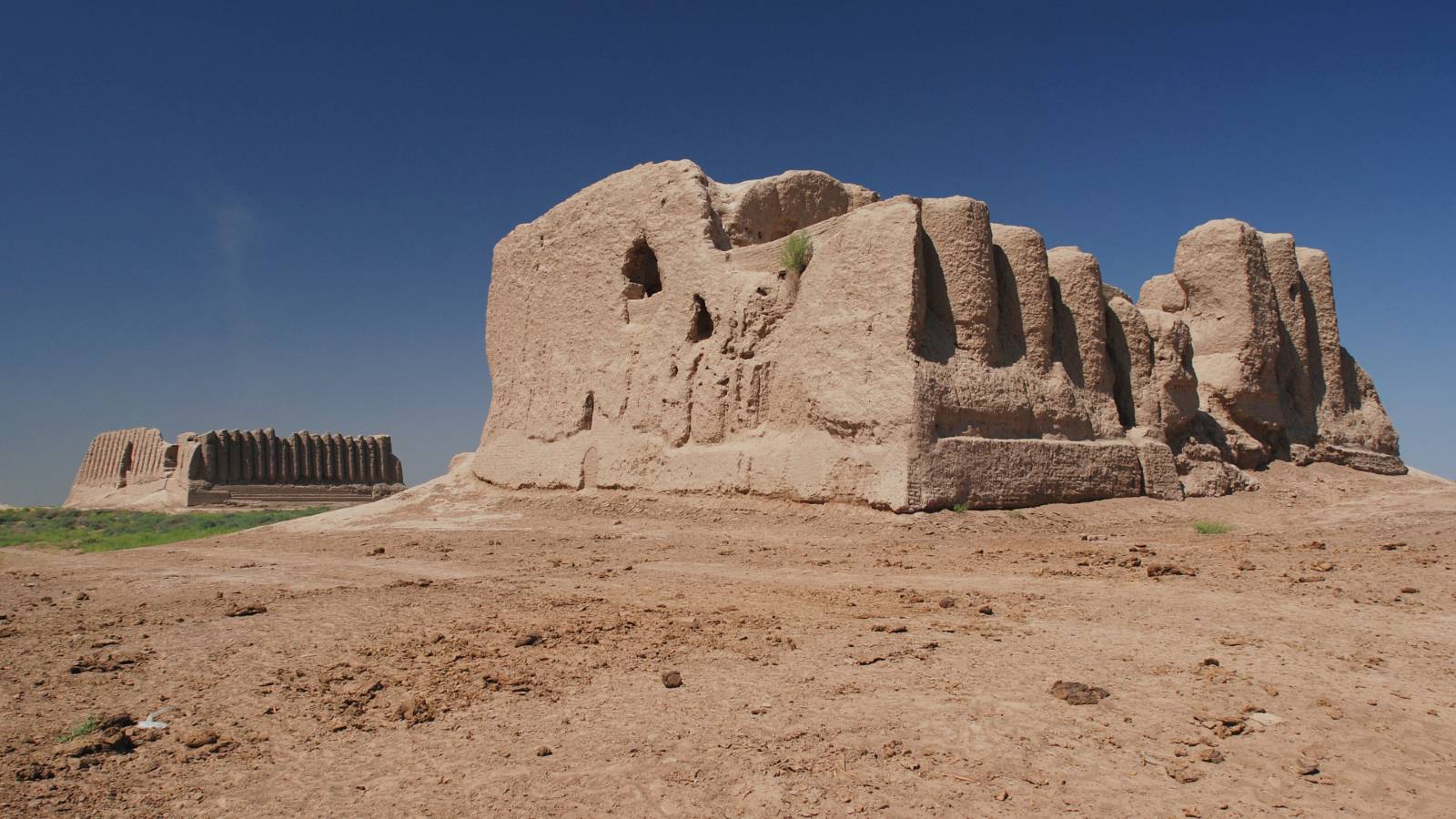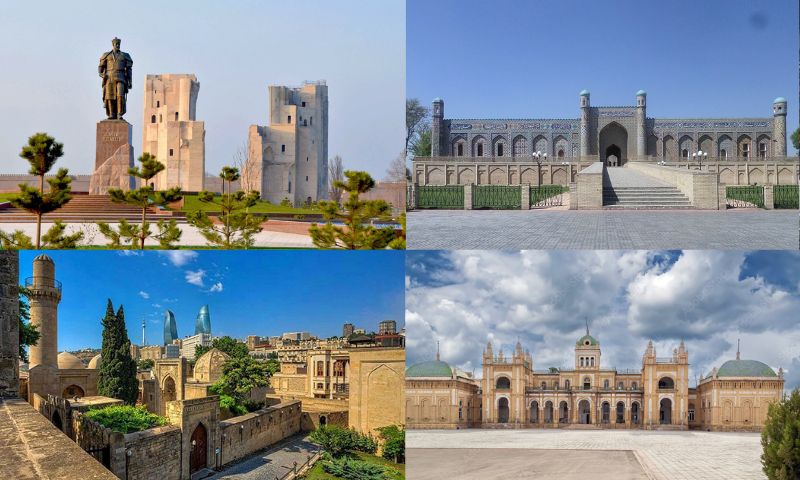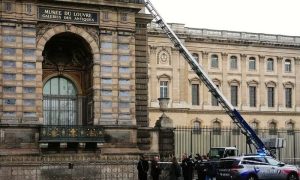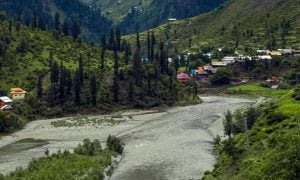ISLAMABAD: From the deserts of Turkmenistan to the valleys of Uzbekistan, Central Asia is filled with stunning palaces that show the region’s long and rich history. These beautiful buildings—like the colourful Ak-Saray Palace in Shahrisabz or the graceful Palace of the Shirvanshahs in Azerbaijan—tell stories of rulers, artists, and daily life in times long past. From Khiva’s tile-covered Toshhovli Palace to the stone walls of Tash Rabat in Kyrgyzstan, each palace shares a piece of the region’s creative spirit and deep connection to the Silk Road. Today, these landmarks are more than just places to visit—they are powerful reminders of Central Asia’s shared cultural past. Here is a look at some of the beautiful palaces of the region in pictures.
Uzbekistan
- Ak-Saray Palace
Ak-Saray Palace, built by Amir Timur in the late 14th century in Shahrisabz, Uzbekistan, was intended as a grand symbol of his power. Though much of the structure is now in ruins, its massive entrance portal still stands, adorned with stunning blue and gold tilework. The palace is part of the UNESCO-listed Historic Centre of Shahrisabz.
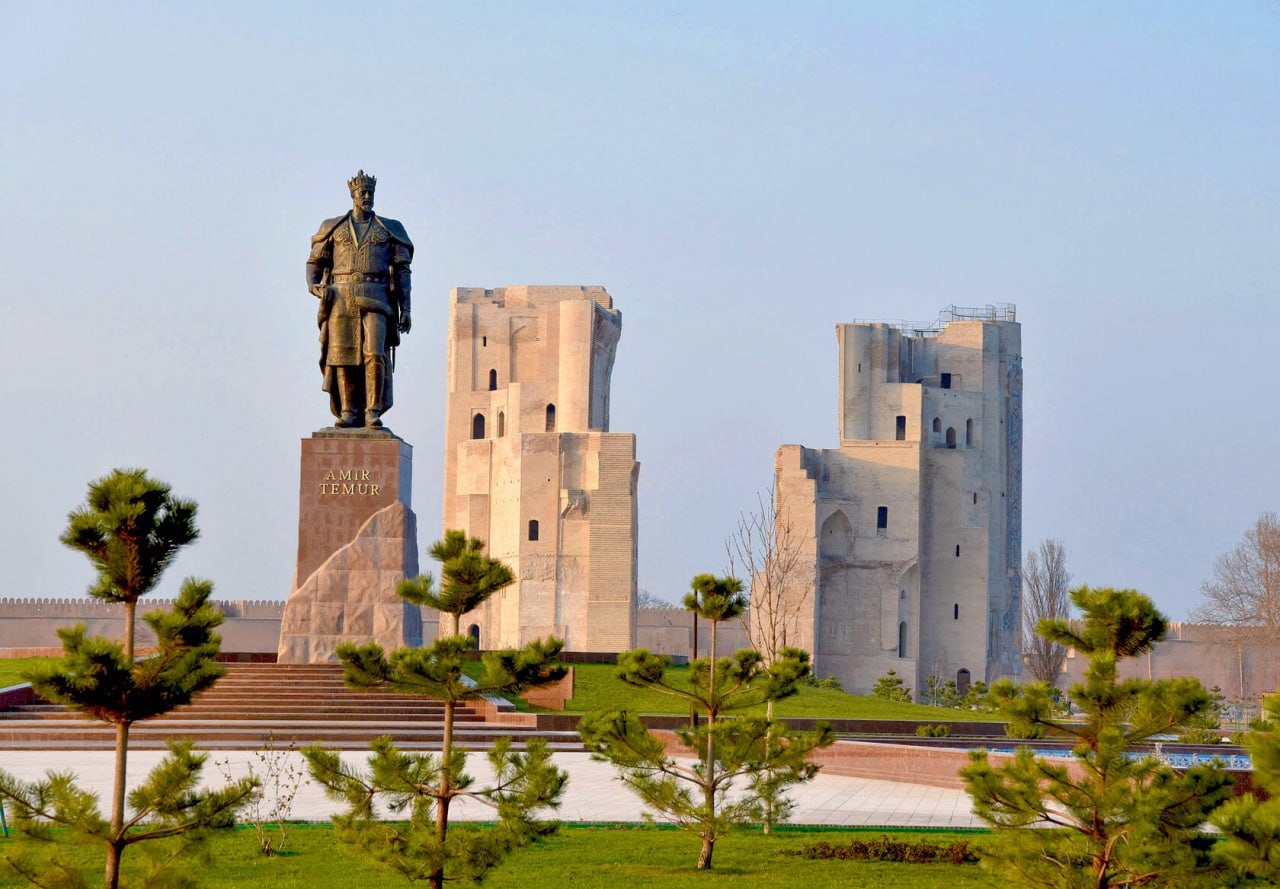
- Toshhovli Palace
Toshhovli Palace, meaning “Stone House,” was built in the 19th century by Khivan ruler Alla Kuli Khan in Khiva, Uzbekistan. Designed as a royal residence, it features over 150 rooms arranged around three main courtyards, with exquisite tilework and carved wooden columns. The palace is a prime example of Khivan architecture and part of the Itchan Kala UNESCO World Heritage Site.
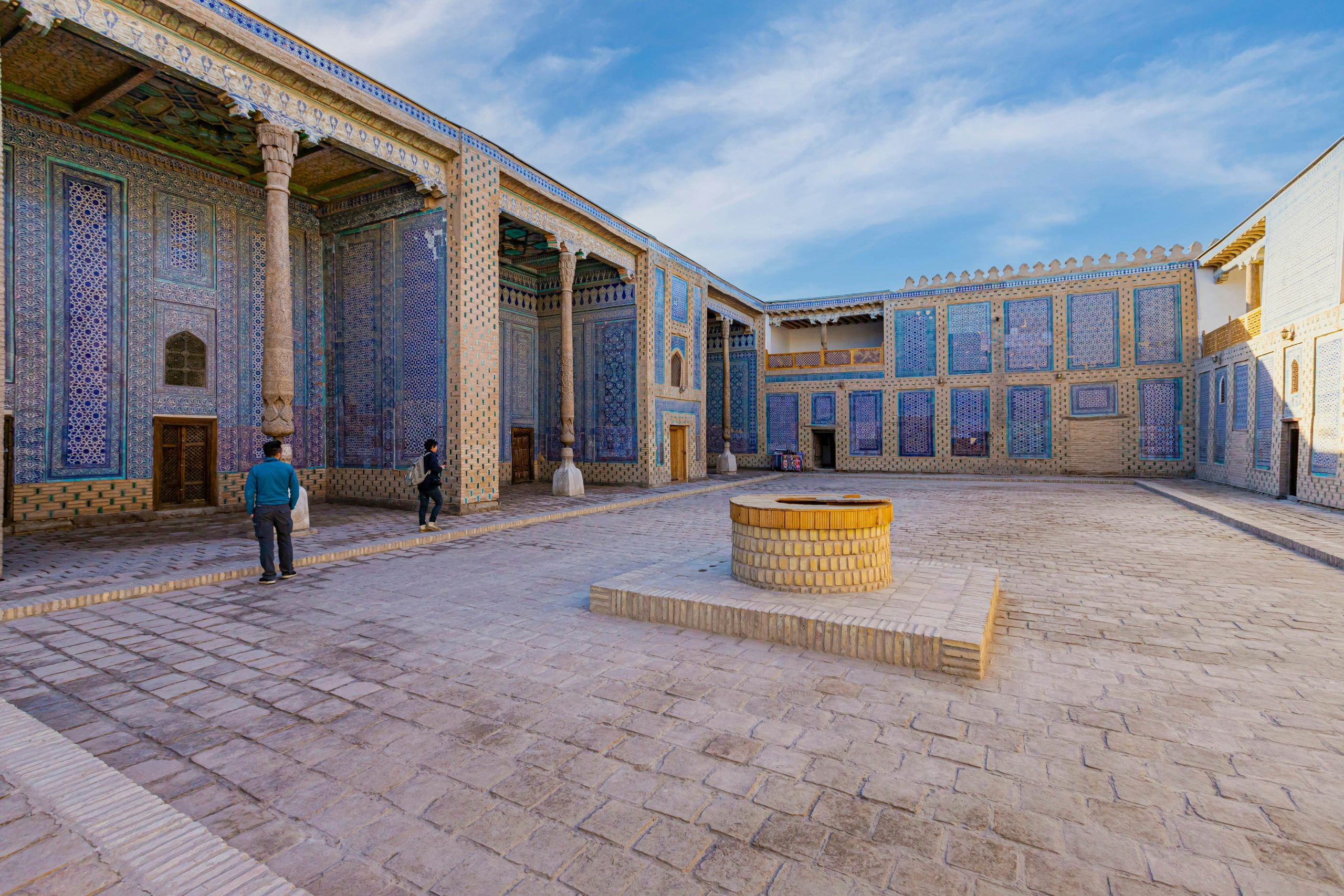
- Khudoyar-Khan Palace
Khudoyar-Khan Palace, located in Kokand, Uzbekistan, was built between 1863 and 1871 by the last ruler of the Kokand Khanate, Khudoyar Khan. The palace originally had seven courtyards and 114 rooms, showcasing rich tilework, carved ganch, and painted ceilings. It stands as a symbol of late Kokand architectural style and now functions as a historical museum.
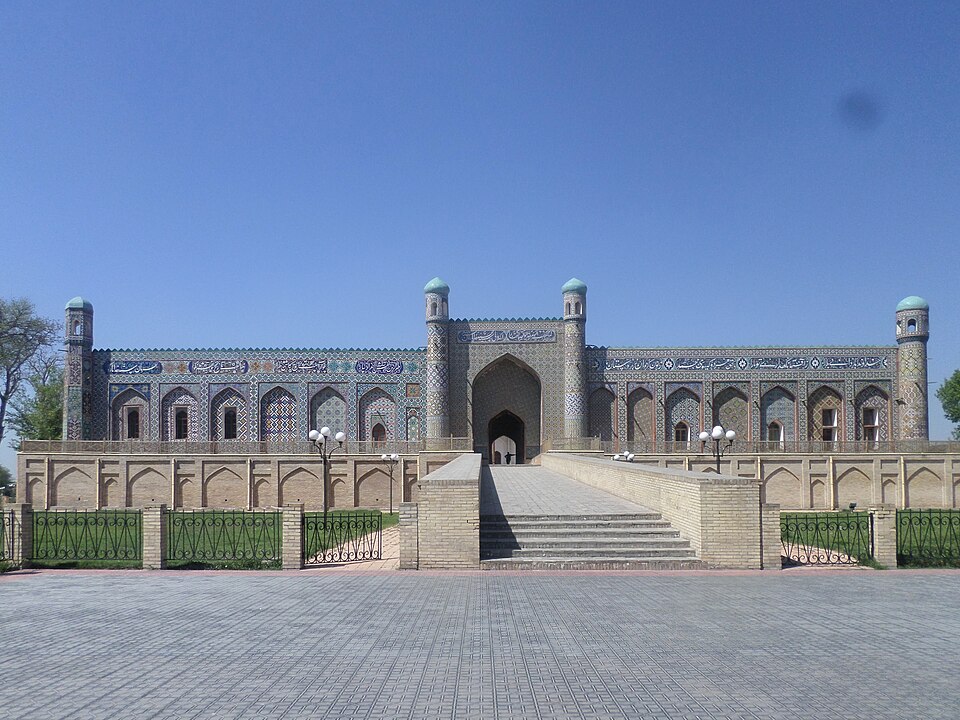
- Kagan Palace
Kagan Palace, built between 1895 and 1898 by Emir Said Abdulahad Khan near Bukhara, was intended to host high-ranking Russian officials, including Tsar Nicholas II. Designed by Russian architect Alexei Benois, it blends European and Central Asian styles with Moorish, Baroque, and Neo-Mauritanian elements. Today, it serves as a railway museum, though much of its interior remains unrestored.
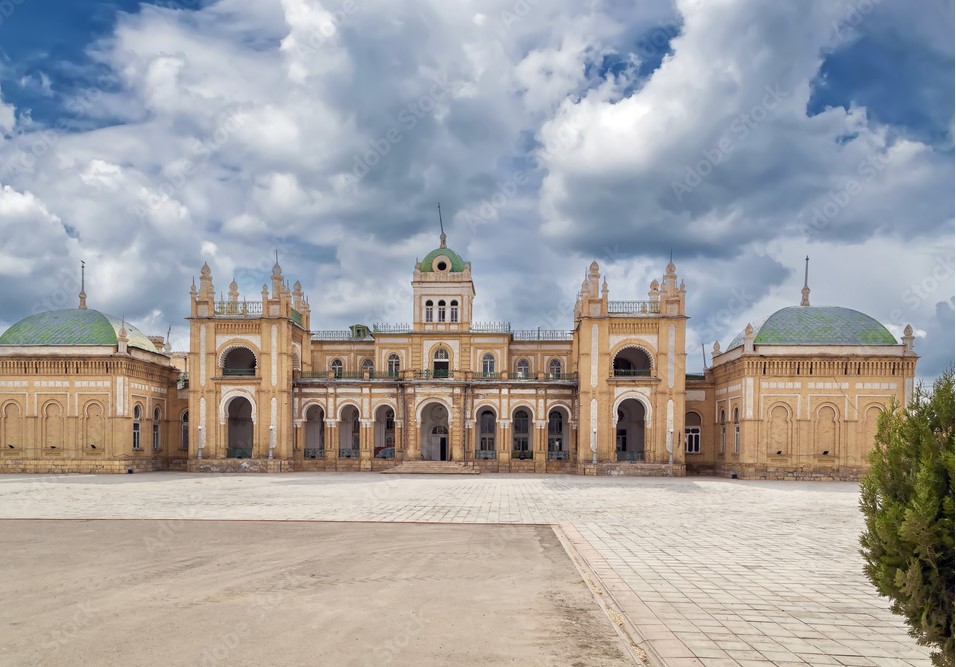
Tajikistan
- Navruz Palace
Navruz Palace, located in Dushanbe, Tajikistan, was completed in 2014 as a grand cultural complex originally intended to be a teahouse. Covering around 40,000 square meters, it features twelve richly decorated halls with intricate woodwork, gold-leaf plaster, and gemstone mosaics. The palace showcases traditional Tajik craftsmanship and hosts official events, weddings, and international summits.
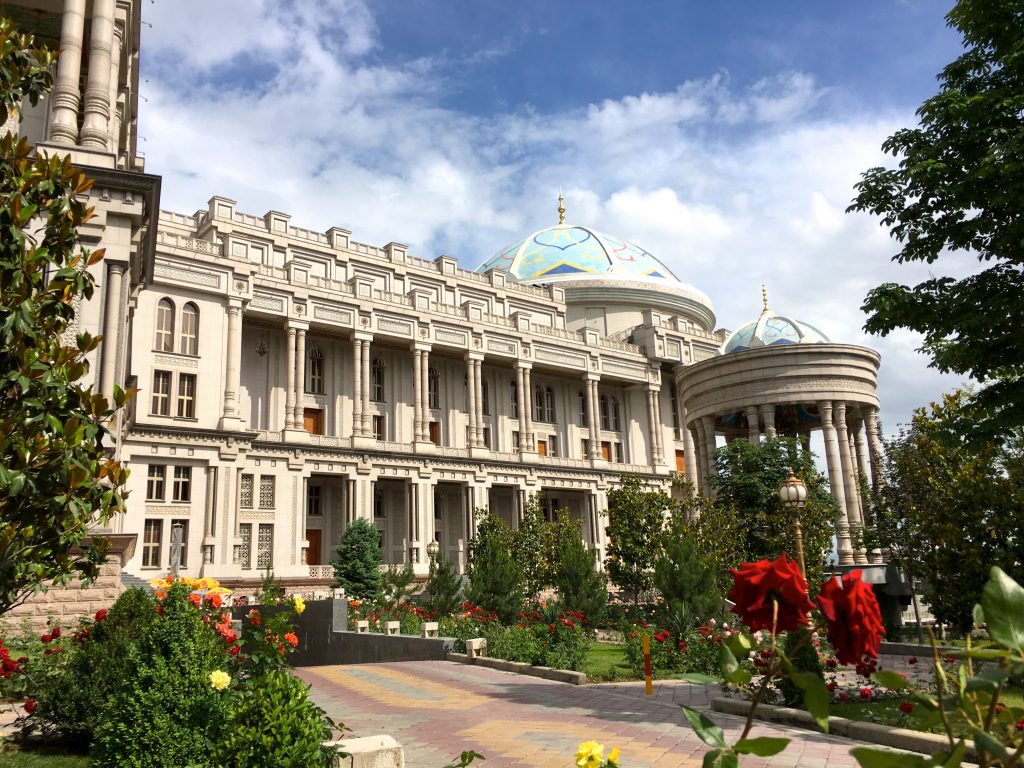
- Khulbuk Palace
Khulbuk Palace in Tajikistan was the residence of Khuttal rulers from the 9th to 12th centuries and features a large courtyard surrounded by fortress walls. The palace interiors are decorated with intricate gypsum-carved patterns, murals, and Arabic inscriptions. Excavations revealed artifacts indicating a rich cultural history, including Zoroastrian influences.
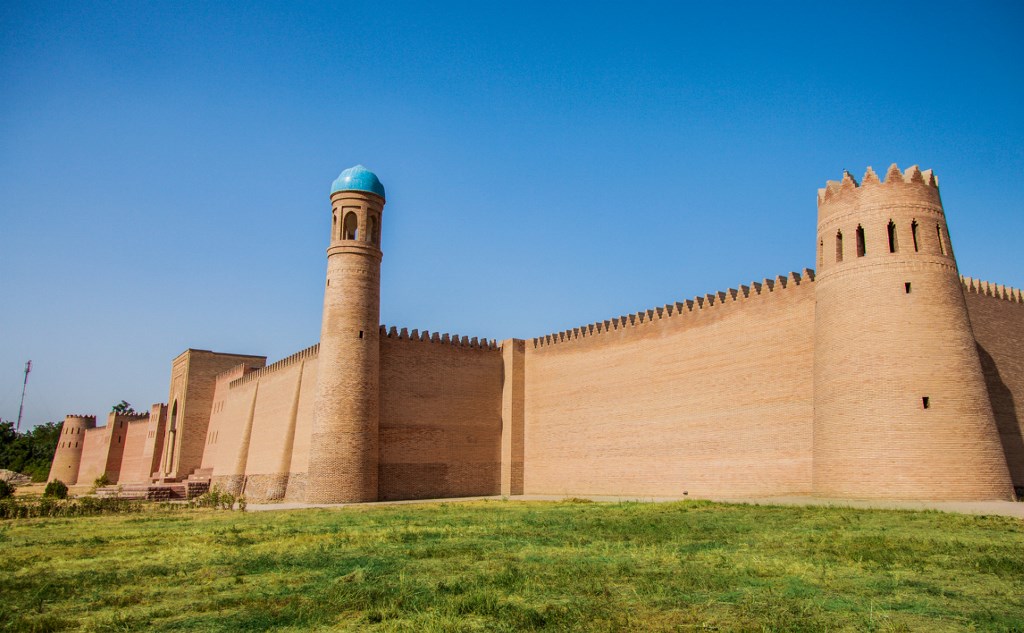
Azerbaijan
- Palace of Shirvanshahs
The Palace of the Shirvanshahs, located in Baku, Azerbaijan, was built in the 15th century as the residence of the Shirvanshah dynasty. It is a masterpiece of medieval Islamic architecture, featuring a main palace, mosque, mausoleum, and a bathhouse within its complex. The palace is a UNESCO World Heritage Site and symbolizes the cultural and political power of the Shirvanshahs.
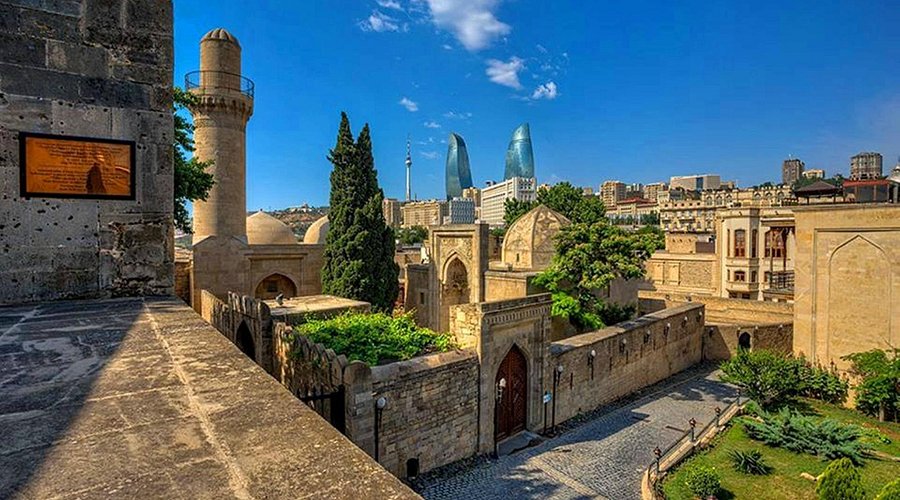
Kyrgyzstan
- Tash Rabat Caravan Palace
Tash Rabat is a 15th-century stone caravanserai located at 3,200 meters above sea level in Kyrgyzstan’s At-Bashy District. It served as a vital rest stop for Silk Road traders journeying between the Fergana Valley and Kashgar. The structure comprises 31 rooms arranged around a central domed hall, built from rubble stone and clay mortar.
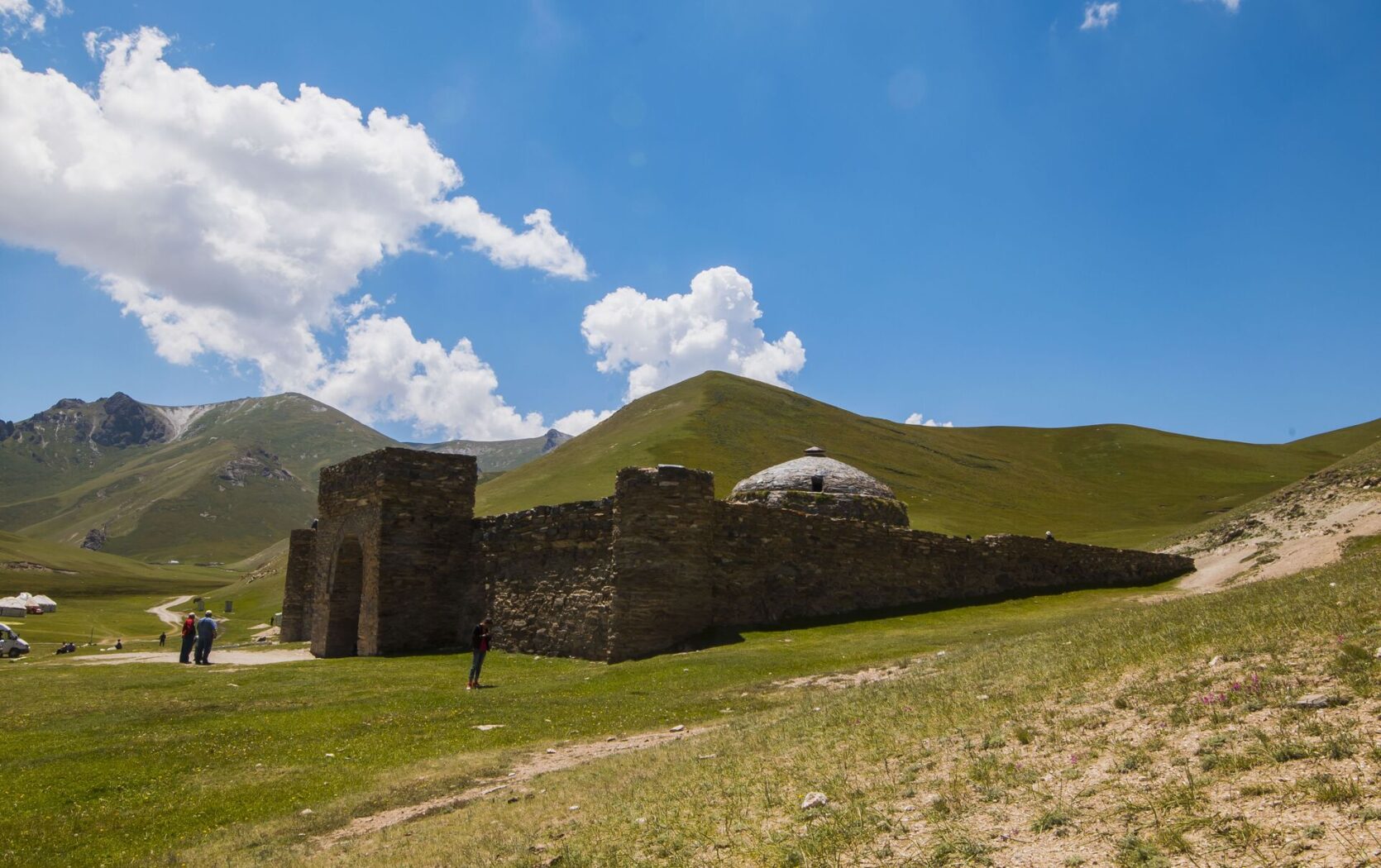
Turkmenistan
- Fortress of Ancient Merv
The Fortress of Ancient Merv, located in present-day Turkmenistan, was a major stronghold on the Silk Road dating back over 2,500 years. It served as a political and military center for several empires, including the Achaemenids, Parthians, and Seljuks. The site features massive defensive walls and ruins of palaces, reflecting its historic importance as one of Central Asia’s greatest ancient cities.
